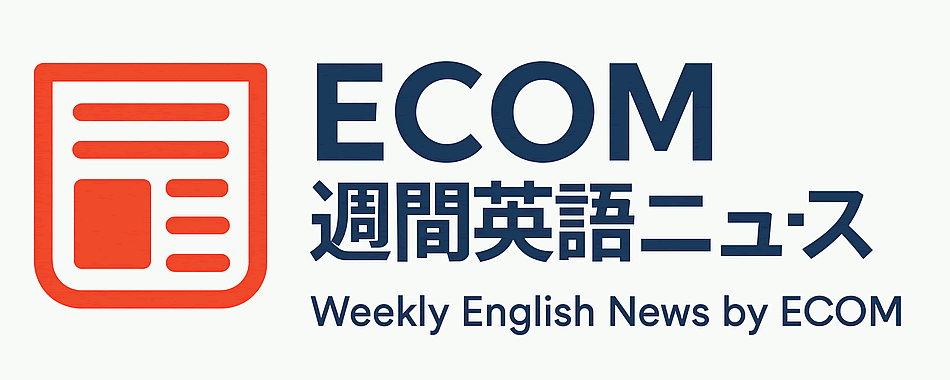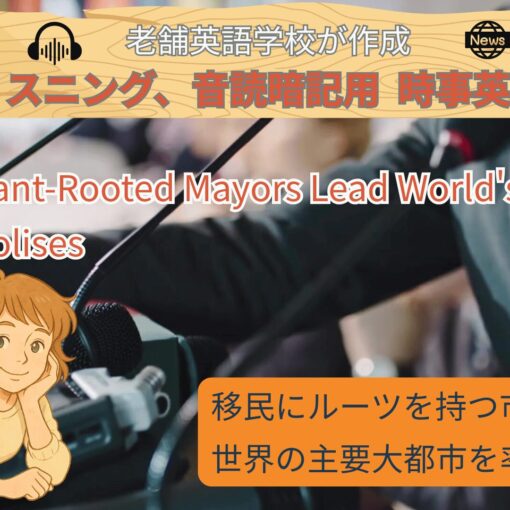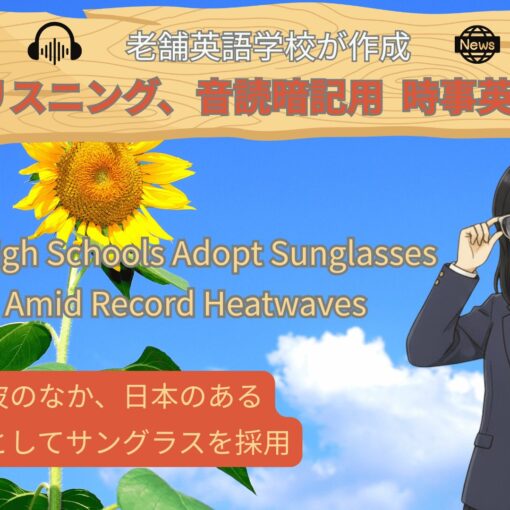Expo 2025 Osaka‑Kansai Opens with Grand Ring, Showcasing Future‑Society Innovations
Japan’s long‑anticipated Expo 2025 Osaka‑Kansai opened on 13 April 2025 on the man‑made island of Yumeshima, where it will run through 13 October. Organisers expect about 28 million visitors to pass through the gates during the six‑month run, eager to explore the theme “Designing Future Society for Our Lives.
More than 160 countries, regions and international organisations have confirmed participation, filling roughly 80 national and thematic pavilions arranged around the two‑kilometre‑long “Grand Ring,” the world’s largest wooden structure designed by architect Sou Fujimoto. Highlights already drawing crowds include autonomous “flying‑car” prototypes, laboratory‑grown human‑heart tissue, and the planet’s longest sushi conveyor belt. Meanwhile, Myaku‑Myaku—an amorphous blue‑and‑red mascot—patrols the grounds, greeting visitors for souvenir photos.
This is Osaka’s second turn as World Expo host. Expo ’70, remembered for its avant‑garde Tower of the Sun and the first moving sidewalk in Japan, attracted a record 64 million guests and remains a touchstone of the nation’s post‑war economic ascent. Organisers hope the 2025 edition will likewise revitalise the Kansai economy and showcase Japanese innovation ahead of the 2030 Sustainable Development Goals deadline.
World’s fairs themselves date back to the Great Exhibition of 1851 in London’s Crystal Palace, an event conceived by Prince Albert to display the fruits of the Industrial Revolution. That inaugural fair welcomed six million visitors and established the idea that nations could use temporary megastructures to trade ideas, celebrate culture and demonstrate cutting‑edge technology—an ethos later codified by the Bureau International des Expositions (BIE) in 1928.
While the Osaka‑Kansai Expo promises a vision of a greener, smarter future, it also faces scrutiny. Construction delays mean several overseas pavilions opened unfinished, and the ¥235‑billion price tag—14 percent of it absorbed by the Grand Ring alone—has fuelled public debate about cost versus benefit. Yet visitors interviewed on opening week said the chance to experience global ingenuity in one place outweighs the controversy. As drone shows illuminate Osaka Bay each evening, the fair’s central message is clear: collaboration—across borders and disciplines—remains the world’s best tool for designing a better tomorrow.
Japan’s lo************* Expo 2025 Osaka‑Kansai op**** on 13 April 2025 on th* ma****** is**** of Yumeshima, wh*** it wi** ru* th***** 13 October. Or********* ex**** ab*** 28 mi***** vi******* to pa** th***** th* ga*** du**** th* si******* ru*, ea*** to ex***** th* th*** “Designing Fu**** Society fo* Our Li****.
Mo** th** 160 co*********, re***** an* in************* or*********** ha** co******** pa***********, fi***** ro***** 80 na****** an* th****** pa******* ar****** ar**** th* tw***************** “Grand Ring,” th* wo***** la***** wo**** st******** de******* by ar******** Sou Fujimoto. Hi********* al***** dr***** cr**** in***** au********* “fl*********” pr*********, la************** hu********* ti*****, an* th* pl****** lo***** su*** co******* be**. Me********, Myaku‑Myaku — an am******* bl********** ma**** — pa****** th* gr******, gr****** vi******* fo* so******* ph*****.
Th** is Osaka’s se**** tu** as World Expo ho**. Expo ’70, re********* fo* it* av********* Tower of the Sun an* th* fi*** mo**** si******* in Japan, at******** a re**** 64 mi***** gu**** an* re***** a to********* of th* na****** po****** ec******* as*****. Or********* ho** th* 2025 ed***** wi** li****** re********* th* Kansai ec***** an* sh******* Japanese in******** ah*** of th* 2030 Sustainable Development Goals de********.
Wo***** fa*** th********* da** ba** to th* Great Exhibition of 1851 in London’s Crystal Palace, an ev*** co******** by Prince Albert to di***** th* fr**** of th* Industrial Revolution. Th** in******** fa** we****** si* mi***** vi******* an* es********* th* id** th** na***** co*** us* te******** me************ to tr*** id***, ce******* cu***** an* de********* cu********** te******** — an et*** la*** co****** by th* Bureau International des Expositions (BIE) in 1928.
Wh*** th* Osaka‑Kansai Expo pr******* a vi**** of a gr******, sm***** fu*****, it al** fa*** sc*******. Co********** de**** me** se***** ov****** pa******* op**** un*********, an* th* ¥235‑billion pr*** ta** — 14 pe***** of it ab****** by th* Grand Ring al*** — ha* fu***** pu**** de**** ab*** co** ve**** be******. Ye* vi******* in********* on op***** we** sa** th* ch**** to ex********* gl**** in******** in on* pl*** ou******** th* co**********. As dr*** sh*** il******** Osaka Bay ea** ev*****, th* fa**** ce***** me***** is cl***: co*********** — ac**** bo***** an* di********* — re***** th* wo***** be** to** fo* de******** a be**** to*******.
■ Vocaburaly
□ long‑anticipated — 長く待ち望まれていた
□ man‑made island — 人工島
□ run through [date]
- 例文: … where it will run through 13 October.
- 意味: (イベントなどが)~(特定の日付)まで続く、開催される
- 解説: 動詞 “run” は「走る」以外にも「(事が)続く、継続する、(興行などが)上演される」という意味で使われます。”through” と組み合わせることで、終了日を含めてその日まで続くことを示します。
- 和訳: (それが)10月13日まで開催される(場所)
□ [Noun] eager to [Verb]…
- 例文: … visitors … eager to explore the theme…
- 意味: ~することを熱望している(名詞)
- 解説: 形容詞 “eager” (熱望して) が不定詞 (to explore) を伴い、前の名詞 “visitors” の状態や意欲を説明しています。(Visitors [who are] eager to…) のように関係代名詞とbe動詞が省略された形と捉えることもできます。名詞を後ろから修飾する形容詞句の使い方として注意が必要です。
- 和訳: テーマを探求することを熱望している(訪問者)
□ remains a touchstone of …
- 例文: … [Expo ’70] remains a touchstone of the nation’s post-war economic ascent.
- 意味: ~の試金石(基準、重要な指標)であり続けている
- 解説: 動詞 “remain” は「~のままである、~であり続ける」という意味で、後ろに名詞や形容詞を補語として取ります。ここでは “a touchstone” (試金石) という名詞を補語にとり、「~という状態が続いている」ことを示しています。”touchstone” はやや難しい単語ですが、比喩的な意味で使われます。
- 和訳: (万博’70は)日本の戦後の経済的発展の試金石であり続けている
□ autonomous (vehicle) — 自律走行の/自動運転の
□ date back to …
- 例文: World’s fairs themselves date back to the Great Exhibition of 1851…
- 意味: (起源・時代が)~に遡る
- 解説: 物事の始まった時期や起源を示す定型表現です。”date” が動詞として使われています。
- 和訳: 万国博覧会自体は、1851年のロンドン万国博覧会にまで遡る
□ laboratory‑grown — 研究室で培養された
□ touchstone — 判断基準・象徴的存在
□ revitalise — 活性化する、再生させる
□ avant‑garde — 前衛的な、最先端の
□ inaugural — 最初の、初開催の
□ scrutiny — 綿密な調査、厳しい注視
□ megastructure — 巨大建築物(大規模構造物)
□ has fuelled public debate about …
例文: … the ¥235-billion price tag … has fuelled public debate about cost versus benefit.
意味: ~についての公の議論を煽った、活発化させた、助長した
解説: 動詞 “fuel” は元々「燃料を供給する」という意味ですが、ここでは比喩的に「(感情や議論などを)煽る、活発にする」という意味で使われています。現在完了形 (has fuelled) になっていることで、過去から現在までの影響を示唆しています。”public debate about…” (~に関する公の議論) という組み合わせもよく使われます。
■ 和訳
長らく待ち望まれていた 2025年大阪・関西万博 が、人工島・夢洲で2025年4月13日に開幕した。会期は10月13日までの6か月間で、主催者はおよそ 2,800万人 の来場を見込む。テーマは 「いのち輝く未来社会のデザイン」 だ。
160超の国・地域および国際機関 が参加を表明し、およそ80の国・テーマ館が、建築家・藤本壮介氏設計による全長2キロの世界最大級木造建築 「グランドリング」 を取り囲む。自律飛行カーの試作機や再生医療による“拍動する”ミニ心臓、世界最長の回転ずしレーンなど話題の展示が目白押しだ。公式キャラクター「ミャクミャク」も来場者との記念撮影に引っ張りだこである。
大阪が万博を開催するのは2度目。1970年の大阪万博 は太陽の塔や日本初の動く歩道で知られ、6,400万人 を動員。戦後日本の高度経済成長を象徴するイベントとなった。主催者は2025年万博でも、関西経済の活性化と日本のイノベーション力の発信を期待している。
万博の起源は、産業革命の成果を示すためにロンドンのクリスタル・パレスで開かれた 1851年の第一回万博(ロンドン万国博) にさかのぼる。600万人 が来場し、「国家が一時的な巨大建築を使って技術・文化を交換する」という現在の万博の原型を築いた。1928年には博覧会国際事務局(BIE)が設立され、万博は5年ごとに開催される形が定着した。
今回の大阪・関西万博は、持続可能でスマートな未来像を提示する一方で、課題も抱える。いくつかの海外パビリオンは工事の遅れで未完成のまま開場し、総事業費2,350億円のうち14%を占めるグランドリングなど費用対効果をめぐる議論もある。それでも開幕週の来場者は「世界の英知を一度に体験できる機会こそ価値がある」と口をそろえる。夜ごと大阪湾を彩るドローンショーが示すのは、国境や分野を越えた協力こそが、より良い明日をデザインする最善の手段だというメッセージである。
ECOMでは、毎週これらの記事を、ディスカッション教材として使え、先生が音読の発音チェックもしてくれます。
興味がある方は体験レッスンをご活用ください。

■ MikeとEmilyのDiscussion
| Mike: Hey Emily! Did you catch that article about Expo 2025 in Osaka? It kicked off last week, April 13th! Man, it sounds absolutely incredible. I’m so pumped about it! Emily: Hello Mike. Yes, I did read about it. Quite a significant event, isn’t it? Osaka hosting for the second time. The theme, “Designing Future Society for Our Lives,” is certainly thought-provoking. Mike: Thought-provoking? It’s awesome! They’re talking autonomous “flying cars,” lab-grown human heart tissue – seriously, it’s like stepping right into a sci-fi movie! And that “Grand Ring” structure? The world’s biggest wooden structure? I bet the energy there is fantastic. It’s the kind of global get-together and innovation showcase the world needs. Emily: I agree the technological aspects sound fascinating, Mike. Mike: Exactly! And think about the boost for the Kansai economy! The article mentioned Expo ’70 was a huge deal for Japan’s post-war growth. They’re hoping for a similar revitalization. Emily: The potential economic benefits and the platform for showcasing innovation are certainly key arguments for hosting such an event. However, the article didn’t shy away from the difficulties, did it? It mentioned construction delays leading to some pavilions opening unfinished, and that rather steep price tag of ¥235 billion. Mike: Yeah, I saw that, but come on, Emily, mega-projects like this always hit a few snags. Building something on that scale, especially on a man-made island like Yumeshima, is bound to have challenges. The cost is high, sure, but you have to invest to innovate, right? It’s about the vision, the shared experience. The article even said visitors felt the chance to see global ingenuity outweighed the controversy! Emily: That’s a fair point about visitor perception, and the long-term “soft power” benefits of cultural exchange and inspiration are harder to quantify than construction costs. But ¥235 billion is a substantial sum, and with 14% just for the Grand Ring, it’s understandable that there’s public debate about cost versus benefit, especially if deadlines were missed. It raises questions about the feasibility and management of such large-scale events in the modern era. Is a six-month fair the most efficient way to achieve those goals today? Mike: I think it absolutely is! Where else can you get that concentration of global creativity and technology in one place, physically interacting? It fosters connections you just can’t replicate online. Those drone shows over Osaka Bay every night? That sends a powerful message about collaboration for the future. It’s inspiring! Emily: The message of collaboration is certainly positive and timely. I suppose the success will ultimately be measured not just by visitor numbers, but by the lasting impact – whether it genuinely sparks innovation, fosters international understanding, and provides value proportionate to the significant investment and challenges faced. It will be interesting to follow its progress over the next six months until it closes in October. Mike: Well, I’m betting on success! I wish I could hop on a plane and see it all myself. It just sounds like an unmissable glimpse into tomorrow. Emily: (Smiling slightly) It does sound like quite the spectacle. Let’s hope it achieves its ambitious goals and leaves a positive legacy, both for Osaka and for the future of World Expos. | Mike: He* Emily! Di* yo* ca*** th** ar***** ab*** Expo 2025 in Osaka? It ki**** of* la** we***, April 13th! Ma*, it so**** ab******** in*********. I’* so pu**** ab*** it! Emily: He*** Mike. Ye*, I di* re** ab*** it. Qu*** a si********* ev****, is**’* it? Osaka ho***** fo* th* se**** ti**. Th* th****, “Designing Fu**** Society fo* Our Li****,” is ce******** th****************. Mike: Th****************? It’* aw*****! Th**** ta***** au********* “fl**** ca***,” la******** hu*** he*** ti**** – se*********, it’* li** st****** ri*** in** a sc**** mo****! An* th** “Grand Ring” st********? Th* wo***** bi***** wo**** st********? I be* th* en**** th*** is fa********. It’* th* ki** of gl**** ge********** an* in******** sh******* th* wo*** ne***. Emily: I ag*** th* te*********** as***** so*** fa**********, Mike. Mike: Ex******! An* th*** ab*** th* bo*** fo* th* Kansai ec******! Th* ar***** me******** Expo ’70 wa* a hu** de** fo* Japan’s po****** gr*****. Th**** ho**** fo* a si***** re*************. Emily: Th* po******** ec******* be******* an* th* pl****** fo* sh********* in******** ar* ce******** ke* ar******** fo* ho***** su** an ev****. Ho******, th* ar***** di**’* sh* aw** fr** th* di***********, di* it? It me******** co********** de**** le***** to so** pa******* op***** un*********, an* th** ra**** st*** pr*** ta* of ¥235 bi******. Mike: Ye**, I sa* th**, bu* co** on, Emily, me*********** li** th** al**** hi* a fe* sn***. Bu****** so******* on th** sc***, es******** on a ma****** is**** li** Yumeshima, is bo*** to ha** ch*********. Th* co** is hi**, su**, bu* yo* ha** to in**** to in*******, ri****? It’* ab*** th* vi*****, th* sh**** ex*********. Th* ar***** ev** sa** vi******* fe** th* ch**** to se* gl**** in******** ou******** th* co**********! Emily: Th*** a fa** po*** ab*** vi***** pe**********, an* th* lo******* “so** po****” be******* of cu****** ex****** an* in********** ar* ha**** to qu****** th** co********** co****. Bu* ¥235 bi***** is a su********** su*, an* wi** 14% ju** fo* th* Grand Ring, it’* un************* th** th***** pu**** de**** ab*** co** ve**** be******, es******** if de******** we** mi*****. It ra**** qu******** ab*** th* fe********** an* ma******** of su** la********* ev**** in th* mo**** er*. Is a si******* fa** th* mo** ef******** wa* to ac***** th*** go*** to****? Mike: I th*** it ab******** is! Wh*** el** ca* yo* ge* th** co************ of gl**** cr********* an* te******** in on* pl****, ph********* in**********? It fo****** co********** yo* ju** ca**’ re******** on*****. Th*** dr*** sh*** ov** Osaka Bay ev*** ni****? Th** se*** a po******* me***** ab*** co*********** fo* th* fu*****. It’* in********! Emily: Th* me***** of co*********** is ce******** po****** an* ti*****. I su***** th* su***** wi** ul********* be me****** no* ju** by vi***** nu******, bu* by th* la***** im**** – wh***** it ge******** sp**** in**********, fo****** in************* un*************, an* pr****** va*** pr*********** to th* si********* in******** an* ch******** fa****. It wi** be in********* to fo**** it* pr****** ov** th* ne** si* mo**** un*** it cl**** in October. Mike: We**, I’* be***** on su******! I wi** I co*** ho* on a pl*** an* se* it al* my*****. It ju** so**** li** an un********* gl***** in** to*******. Emily: (Sm***** sl******) It do** so*** li** qu*** th* sp********. Le**’ ho** it ac****** it* am******* go*** an* le**** a po****** le*****, bo** fo* Osaka an* fo* th* fu**** of Wo*** Expos. |
■ Vocaburaly
- pumped
- 和訳: ワクワクして、興奮して (スラング的な口語表現)
- (例: I’m so pumped about it!)
- thought-provoking
- 和訳: 考えさせられる、示唆に富む
- (例: …is certainly thought-provoking.)
- autonomous
- 和訳: 自律的な、自動の
- (例: autonomous “flying cars”)
- human heart tissue
- 人間の心臓組織
- revitalization
- 和訳: 再活性化、復興、再生
- (例: hoping for a similar revitalization.)
- snags
- 和訳: (予期せぬ)障害、困難、問題点 (口語表現)
- (例: mega-projects like this always hit a few snags.)
- ingenuity
- 和訳: 創意工夫、独創性、巧妙さ
- (例: the chance to see global ingenuity)
- outweighed
- 和訳: ~に勝る、~より重要である (outweighの過去形)
- (例: ingenuity outweighed the controversy!)
- quantify
- 和訳: ~を数量化する、~の量を測る
- (例: harder to quantify than construction costs.)
- feasibility
- 和訳: 実現可能性
- (例: raises questions about the feasibility and management…)
- proportionate
- 和訳: 比例した、釣り合った、相応の
- (例: provides value proportionate to the significant investment…)
■ 和訳
マイク: やあエミリー!大阪の万博2025の記事、見た?先週の4月13日に始まったんだ!いやー、もう、めちゃくちゃすごいみたいだよ。すごくワクワクしてるんだ!
エミリー: こんにちはマイク。ええ、読みましたよ。かなり大きなイベントですよね?大阪での開催は2回目ですし。テーマの「いのち輝く未来社会のデザイン (Designing Future Society for Our Lives)」は、確かに考えさせられるものがありますね。
マイク: 考えさせられるだって?最高だよ!自動運転の「空飛ぶクルマ」とか、研究室で培養されたヒト心臓組織とかの話だよ。マジで、SF映画の世界に足を踏み入れるみたいじゃないか!
それに、あの「グランドリング」っていう建物?世界最大の木造建築なんだって?
こういう世界的な集まりと技術革新のショーケースこそ、世界が必要としているものだよ。
エミリー: 技術的な側面は確かに魅力的だと思います、マイク。
マイク: その通り!それに、関西経済への効果を考えてみてよ!記事によると、1970年の万博は日本の戦後復興にすごく貢献したって。今回も同じような活性化を期待してるんだ。
エミリー: 潜在的な経済効果や、技術革新を披露するプラットフォームというのは、確かにこうしたイベントを主催する上での重要な論拠ですね。でも、記事は困難な点も隠さずに伝えていましたよね?建設の遅れで一部のパビリオンが未完成のままオープンしたこととか、2350億円というかなり高額な費用についても。
マイク: ああ、それは見たけど、でもさ、エミリー、こういう巨大プロジェクトにはいつも多少の問題はつきものだよ。あの規模のものを、特に夢洲みたいな人工島に建てるんだから、困難はつきものさ。費用は高いけど、革新のためには投資しなきゃだめだろ?大切なのはビジョンであり、共有される体験なんだ。記事だって、来場者は世界中の創意工夫に触れる機会は論争を上回る価値があるって感じてたって書いてあったじゃないか!
エミリー: 来場者の受け止め方についての指摘はもっともですし、文化交流や人々を啓発することによる長期的な「ソフトパワー」の恩恵は、建設費のように数値化するのが難しいですからね。でも、2350億円というのは相当な額ですし、グランドリングだけで14%も占めるとなると、特に締め切りに間に合わなかった部分があるなら、費用対効果について公的な議論が起こるのも理解できます。現代において、このような大規模イベントの実現可能性や運営方法について疑問を投げかけるものでもあります。6ヶ月間の博覧会が、今日においてそうした目標を達成するための最も効率的な方法なのかどうか。
マイク: 僕は絶対にそうだと思うね!物理的に一箇所に集まって交流できる場で、世界の創造性や技術がこれほど集中する場所が他にあるかい?オンラインじゃ絶対に再現できない繋がりが生まれるんだ。大阪湾で毎晩行われるドローンショーだって?あれは未来に向けた協力という力強いメッセージを送ってるよ。感動的じゃないか!
エミリー: 協力というメッセージは、確かに前向きで時宜を得たものですね。最終的な成功は、単に来場者数だけでなく、それが真にイノベーションを刺激し、国際理解を深め、そして投じられた莫大な投資と直面した課題に見合う価値を提供できたか、という持続的な影響によって測られるのでしょうね。10月に閉幕するまでの今後6ヶ月間の推移を見守るのは興味深いです。
マイク: まあ、僕は成功する方に賭けるね!飛行機に飛び乗って、自分の目で全部見られたらなあ。とにかく、未来を垣間見る、絶対に見逃せない機会って感じだよ。
エミリー: (少し微笑んで)確かに、かなりのスペクタクル(壮大な見世物)のようですね。その野心的な目標を達成し、大阪にとっても、そして万国博覧会の未来にとっても、前向きな遺産を残すことを願いましょう。
ECOMでは、毎週これらの記事を、ディスカッション教材として使え、先生が音読の発音チェックもしてくれます。
興味がある方は体験レッスンをご活用ください。





